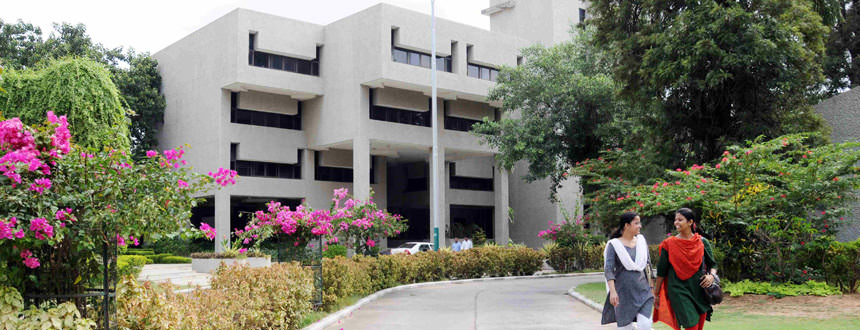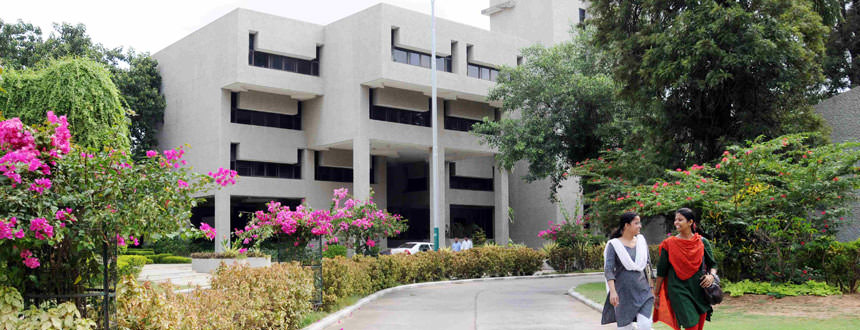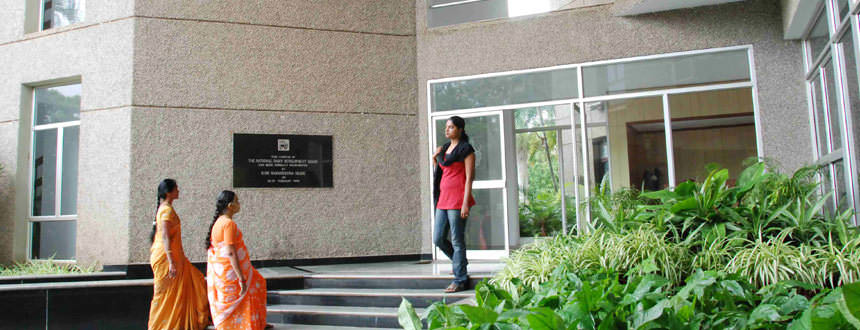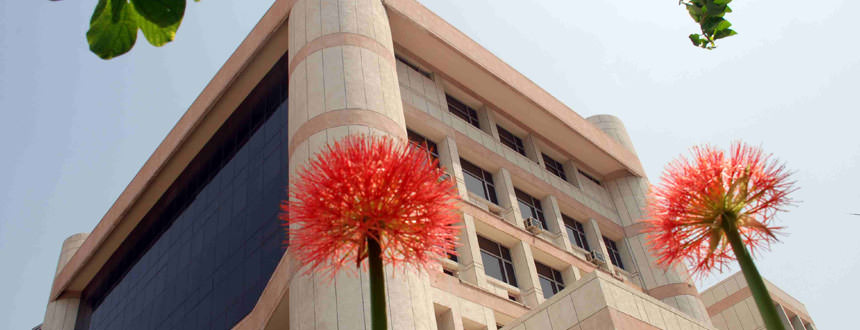Address by Shri Meenesh Shah, Chairman, NDDB at National Workshop on Water Management in Dairy Industry - 28 January 2023
National Workshop on Water Management in Dairy Industry
28 January 2023
VKCoE IRMA Anand
Address by Chief Guest - Shri Meenesh Shah, Chairman, NDDB
- Dr Ram Prakash Aneja, Former Managing Director, NDDB
- Prof Tushaar Shah, Emeritus Professor, IRMA
- Shri Jayen Mehta, MD, GCMMF
- Prof. Umakant Dash, Director, IRMA
- Dr JB Prajapati, Chairperson, VKCoE
- Faculty from IRMA, SMC College of Dairy Science
- Other distinguished participants of this Workshop
I am very happy to join all of you in this National Workshop on Water Management in Dairy Industry being organised by VKCoE IRMA.
Water is essential for the survival of all forms of life on planet earth and a crucial factor in agriculture and food production.
If we see the global water supply, 97% is saline. Therefore, the remaining 3% freshwater perhaps represents the earth’s most valuable natural resource.
However, only .4% of world’s fresh water is readily available as surface water in rivers, lakes and wetlands, and vast majority is embedded in glaciers, polar ice caps or ground water aquifers according to UN Environment Report 2019.
Pressure on freshwater resources is increasing day by day as a result of population growth, climate change, pollution of existing water resources, or urbanisation.
A significant proportion of the world’s population faces difficulties in getting fresh water. Many parts of India are also witnessing moderate to severe water stress situation due to indiscriminate drafting of groundwater for food production.
Areas like Gujarat, Tamil Nadu, Rajasthan, Karnataka where dairy flourishes are also the areas where water scarcity is more. We are heavily dependent on good monsoons every year for sufficient water to be available for the rest of the year.
Even the places that have comparatively more water available need to plan for the future.
Agriculture is the most significant water user in the world, accounting for an estimated 70% of global water withdrawals. The three largest global consumers of water are cereals (27%), Meat (22%) and dairy products (7%). As the consumption of dairy products goes up, so the consumption of water in dairy sector will go up.
India has the world’s largest livestock population, accounting for over 37% of cattle, 21% of buffaloes, 26% of goats and 12% of sheep.
Worldwide, livestock production demands about 30 percent of the global agricultural water requirement and within livestock sector 19 percent of water use is associated with dairy cattle production (Mekonnen and Hoekstra, 2010; 2012).
Production of milk requires considerable amount of water – mainly for production of feed for animals (more than 95 to 98 percent of the total water use) and remaining for drinking and servicing of animals.
I need not emphasize the importance of dairy in the sustainability of livelihoods and food security in India.
Dairying in our country provides sustainable livelihoods for smallholder farmers, generating income that feeds their families, sends their children to school, provides for their families’ health and is reinvested in their farms and communities.
Unlike agricultural crops, the income from milk generates daily cash flow and also helps in providing nutrition to family members throughout the year.
Today, milk is the single largest agricultural commodity contributing 5 percent to the national economy and giving employment to more than 8 Crore rural households directly. Milk was valued at Rs.9.3 Lakh Crore in 2020-21, which is more than the combined value of cereals and pulses.
Milk production in India has grown by more than 6 percent per annum during the year 2014-15 and 2020-21 as against global growth rate of about 2 percent.
As a result of prudent policy interventions from time to time, India continues to rank first in the World since 1998. India achieved an annual milk output of 21.0 Crore tonnes during the year 2020-21 as compared to 14.6 Crore tonnes in 2014-15. India alone contributes to about 23 percent to the global milk production.
The per capita availability of milk has reached a level of 427 grams per day during the year 2020-21, which is more than the world average of around 310 grams per day in 2020.
However, the intensification of dairy production comes with its own unique challenges in terms of consumption of freshwater. With many regions of India becoming increasingly water stressed, the role that water plays in milk production has come under increasing scrutiny.
Water consumption in dairy sector involves water usage along the entire milk supply chain i.e. from dairy farm to milk processing plant and further upto last point of delivery of milk to the consumers.
At farm level, dairy farming involves not only direct consumptive water use by the cattle for milk production, but also embedded water in green fodder and by- products of cereal/other crops, crop residues including silage, roughages and concentrate that are fed to cattle.
Feeding imbalanced rations to animals results in lower milk productivity and higher water footprint of milk (as more than 90% of consumptive water use is attributed to feeds and fodders offered to animals). If ration of animals is balanced there is scope to improve milk productivity/quality and reduce water footprint of milk.
Study conducted by NDDB in Gujarat state indicated that feeding nutritionally balanced rations to cows and buffaloes results in reduction in water footprint of milk between 14 to 15% (1046 vs. 891 litre freshwater per kg of milk, before vs. after feeding balanced rations). Thus, for every one kg fat-and-protein corrected milk production there is a saving of about 155 litres of freshwater.
In general, crop-residues, their by-products, and green fodders have lower water footprint than grains. Therefore, crop-residue based feeding system have lower impact on environment with respect to water footprint of milk.
Water footprint of feeds (litre/kg dry matter) varies greatly,
e.g. Grains (Paddy: 2157, Maize: 1395, Sorghum: 1055, Wheat: 1044);
Crop by-products (De-oiled rice bran: 665, Wheat bran: 485, Cottonseed cake: 1091);
Crop residues (Maize: 818, Paddy: 732; Sorghum: 613; Bajra: 396; Groundnut: 302; Wheat: 257);
Green fodder (Lucerne: 1029, Maize: 463, Sorghum: 256, Hybrid Napier: 306).
In view of this, cultivation of crops that have lower water footprint and their judicious use for feeding of animals would further help in reducing water footprint of milk.
At Industrial level, processing of milk at dairy plant is one of the most water exhaustive steps in dairy value chain, requiring 1 to 10 cubic meter of water per ton of milk processed.
Moreover, the level of water consumption in dairy plants varies as per the product profile manufactured in the factory along with other factors like equipment profiles, degree of process automation etc.
Couple of aspects at the dairy plant level which are being utilised or can be utilised are like:
Automation for water/ product push
Product push & water push in the transfer line are very frequent operations in dairy plant. Automatic timer/sensor-based push operations depending upon line dimensions, flow rates, etc. leads to efficient product recovery & reduction in losses.
Ensures reduced TS loss to 0.8% as against earlier 1.5-2.0% at the same time substantial saving in water.
Membrane Filtration
Based on the water quality and source of water, water treatment plant to be considered with higher recovery percentage. Membrane technology (RO & UF) used with about 90 % recovery in water treatment plant may provide substantial water saving.
Steam-condensate recovery system
Heating and cooling operations are prevalent in dairy plants. While using steam heating, condensate generated can be collected for reutilization in the process using automatic pump traps, condensate collection tanks & pumps. Hot condensate can be collected and used as boiler feed or in clean-in-place (CIP) operations. This helps in saving plant steam consumption.
Milk condensate recovery system for powder plants
Milk condensate collected from evaporator after suitable treatment methods like MGF-ACF, ultrafiltration & RO technologies can be reutilized.
Data integration for big dairies
For large dairies to manage resources, maintain raw materials, keep track of production-dispatch operations, inspect plant performance, utility consumption versus production data etc. i.e. consumption of water per litre of milk processed could be very well monitored with implementation of Management Information System (MIS).
It facilitates field level/plant level data integration with upper tier which can make analysis and decision making easy.
With automation and other engineering aspects currently, the water to milk processing ration has been brought down below 1:1 compared to earlier manual dairies where it used to be more than 2 or 3:1.
A few design aspects like rain water harvesting in dairy plant premises, Recovery & re-utilization of final rinse water as recuperation water and reuse the same for pre-rinse of next CIP cycle etc. provide a better push to the water saving efforts in dairy plant.
Adopting the Concept of Zero Liquid Discharge
Zero Liquid Discharge (ZLD) system is to minimize liquid waste disposal to environment and in the process convert the waste water into clean water that can be reused.
Presently, depletion of water table and deterioration of surface water quality has been becoming a point of concern which will give rise to scarcity of required quantity and quality of fresh potable water.
Statutory guidelines are also becoming stringent day-by-day for discharge of waste water. This makes, ZLD an inevitable option in recent future to take care of Environmental pollution norms and also to Re-use the treated water and reduce the dependence on fresh water for Dairy Plants.
Working for making efficient water usage in Dairy works towards UN Sustainable Development Goals (SGDs) like SDG 6 Clean water and sanitation as well as SDG 9 Industry Innovation and Infrastructure.
SDG 6 talks about ensuring access to clean water for everyone by 2030.
Prof. Tushaar Shah is here, inspired by his work in Dhundi, NDDB established India’s first grid-connected Solar Pump Irrigators Cooperative Enterprise (SPICE) i.e. Mujkuva Saur Urja Utpadak Sahakari Mandli.
With the usage of solar pumps and grid connection of these pumps, farmers are not only utilizing the pumps for irrigating the farms as per the need but also sell the surplus energy saved to the grid which leads to judicious utilization of the ground water.
Now, farmers are learning to optimise energy consumption and smartly trade-off between selling of water and selling of energy. The solar pumps also provide flexibility in irrigation time.
This experiment has inspired the design of Gujarat’s innovative Suryashakti Kisan Yojana (SKY) and one of the three components of the Kisan Urja Surksha evam Utthan Mahabhiyan (KUSUM) scheme of Government of India.
Concludingly, I would say that as a country we need to develop and effectively implement policies to protect freshwater bodies across agricultural landscapes.
The most vulnerable water source- Blue Water source that comes from surface and underground water is the one that needs to be better managed for minimum impact on our environment.
In dairy sector, efficient water management strategies would play a key role in sustaining the dairy production system and meeting the food demands of a growing population with the scarce water resources.
I am sure today’s deliberations will throw up important pointers to meet this challenge effectively.
Thank you.





